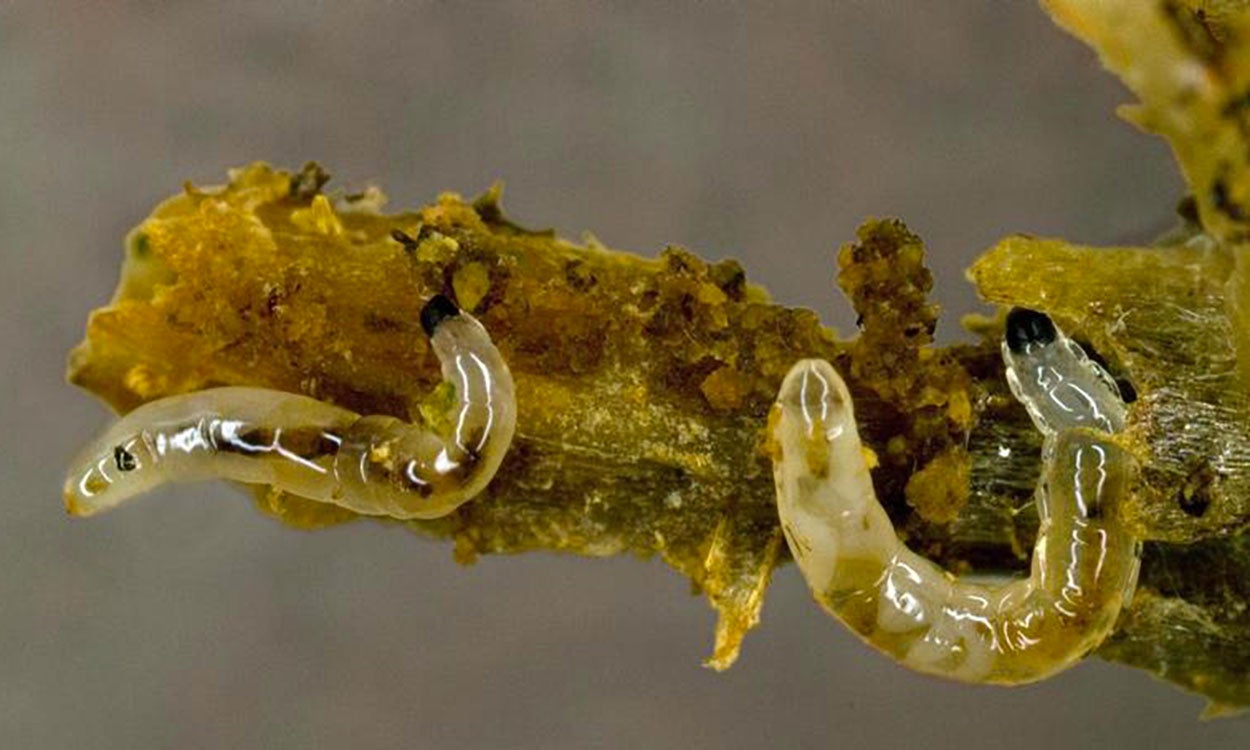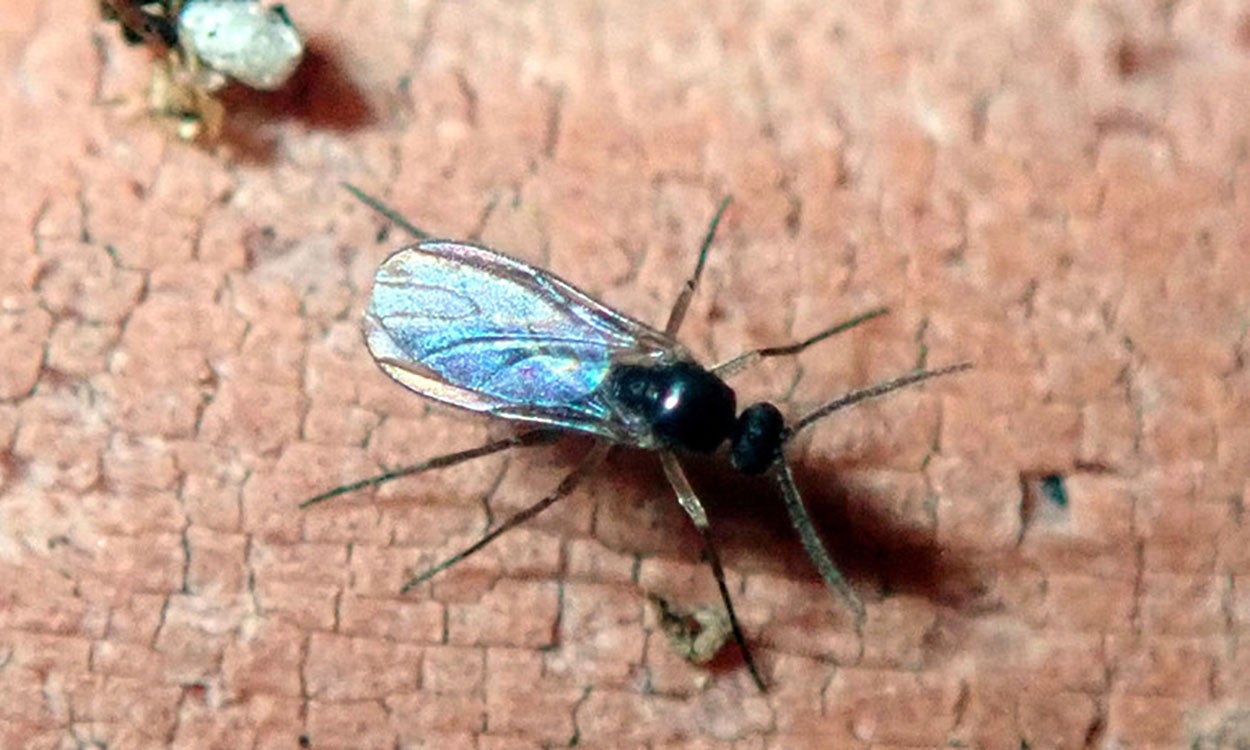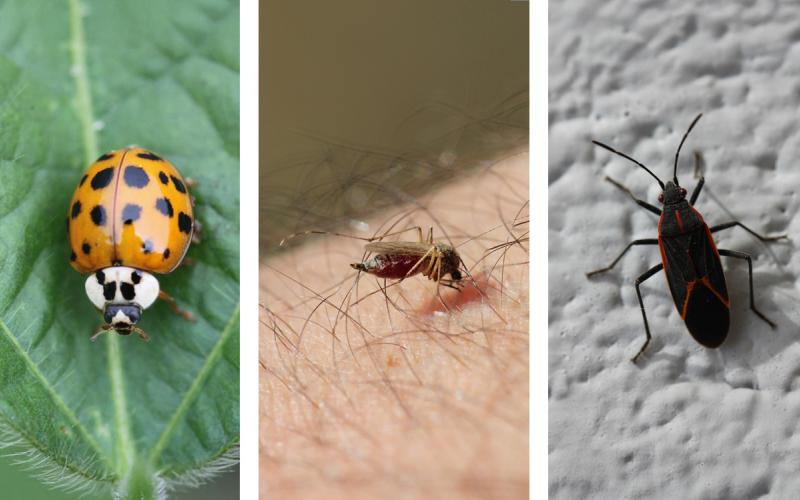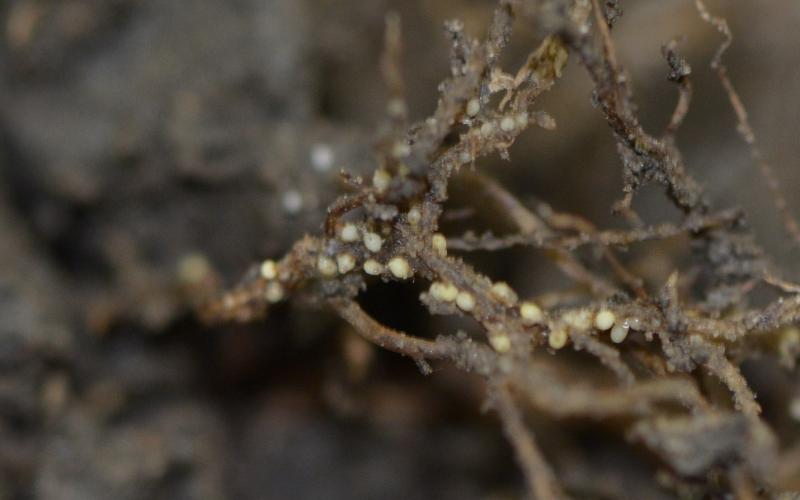Written collaboratively by Adam Varenhorst, Philip Rozeboom, Patrick Wagner, and Brad McManus.
Originally Submitted: May 30, 2023
An insect that we don’t normally receive reports about in crop fields are fungus gnats. These small flies tend to be much more of a nuisance for houseplants and greenhouse production areas. However, the wet, cool spring here in South Dakota has led to favorable conditions in crop fields. In general, fungus gnat larvae in crop fields would most likely be feeding on decaying plant matter. However, there are some dark winged fungus gnat species that will also feed on healthy plant tissue. As far as I can find, there are no reports of fungus gnats feeding on germinating corn or soybean seed or seed. The observations of fungus gnats in crop fields could also be an indicator of plant diseases.
Identification
Larvae

Fungus gnat larvae are slender, elongated maggots that are white in color with smooth skin and as a result often appear “shiny”. The larvae have a black head and when fully grown reach approximately ¼ of an inch in length (Figure 1). Fungus gnat larvae are typically observed in groups and not individually.
Adults

Adult fungus gnats are very small flies at approximately 1/8 of an inch in length. The wings are gray in color and not fully clear. The head and torso of some species of fungus gnats are black in color (Figure 2).
Scouting and Management
There are no scouting guidelines for fungus gnats in corn or soybean. If poor stands are observed evaluation of the cause should occur.
For corn and soybean, there are no insecticides labeled directly for fungus gnat larvae. As mentioned, the fungus gnats are likely present in the fields due to wet conditions and if they are feeding on germinating seeds may be an indicator plant disease. If you observe this issue please send a sample of the germinating seeds to the SDSU Plant Diagnostic Clinic.


